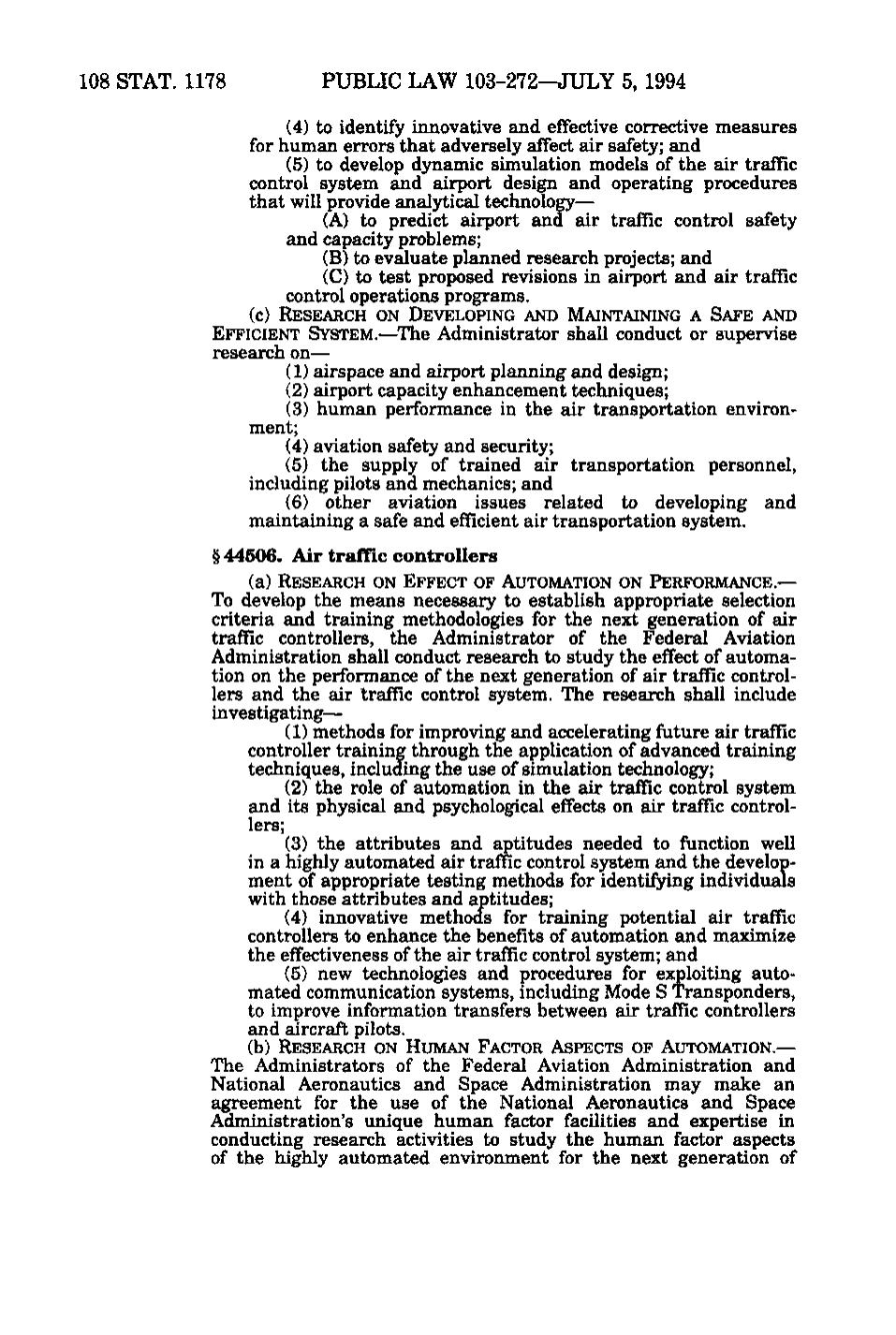108 STAT. 1178 PUBLIC LAW 103-272—JULY 5, 1994 (4) to identify innovative and effective corrective measures for human errors that adversely affect air safety; and (5) to develop dynamic simulation models of the air traffic control system and airport design and operating procedures that will provide analytical technology— (A) to predict airport and air traffic control safety and capacity problems; (B) to evaluate planned research projects; and (C) to test proposed revisions in airport and air traffic control operations programs. (c) RESEARCH ON DEVELOPING AND MAINTAINING A SAFE AND EFFICIENT SYSTEM.— The Administrator shall conduct or supervise research on— (1) airspace and airport planning and design; (2) airport capacity enhancement techniques; (3) human performance in the air transportation environment; (4) aviation safety and security; (5) the supply of trained air transportation personnel, including pilots and mechanics; and (6) other aviation issues related to developing and maintaining a safe and efficient air transportation system. § 44506. Air traffic controllers (a) RESEARCH ON EFFECT OF AUTOMATION ON PERFORMANCE.— To develop the means necessary to establish appropriate selection criteria and training methodologies for the next generation of air traffic controllers, the Administrator of the Federal Aviation Administration shall conduct research to study the effect of automation on the performance of the next generation of air traffic controllers and the air traffic control system. The research shall include investigating— (1) methods for improving and accelerating future air traffic controller training through the application of advanced training techniques, including the use of simulation technology; (2) the role of automation in the air traffic control system and its physical and psychological effects on air traffic controllers; (3) the attributes and aptitudes needed to function well in a highly automated air traffic control system and the development of appropriate testing methods for identifying individuals with those attributes and aptitudes; (4) innovative methods for training potential air traffic controllers to enhance the benefits of automation and maximize the effectiveness of the air traffic control system; and (5) new technologies and procedures for exploiting automated communication systems, including Mode S Transponders, to improve information transfers between air traffic controllers and aircraft pilots. (b) RESEARCH ON HUMAN FACTOR ASPECTS OF AUTOMATION.— The Administrators of the Federal Aviation Administration and National Aeronautics and Space Administration may make an agreement for the use of the National Aeronautics and Space Administration's unique human factor facilities and expertise in conducting research activities to study the human factor aspects of the highly automated environment for the next generation of
�
